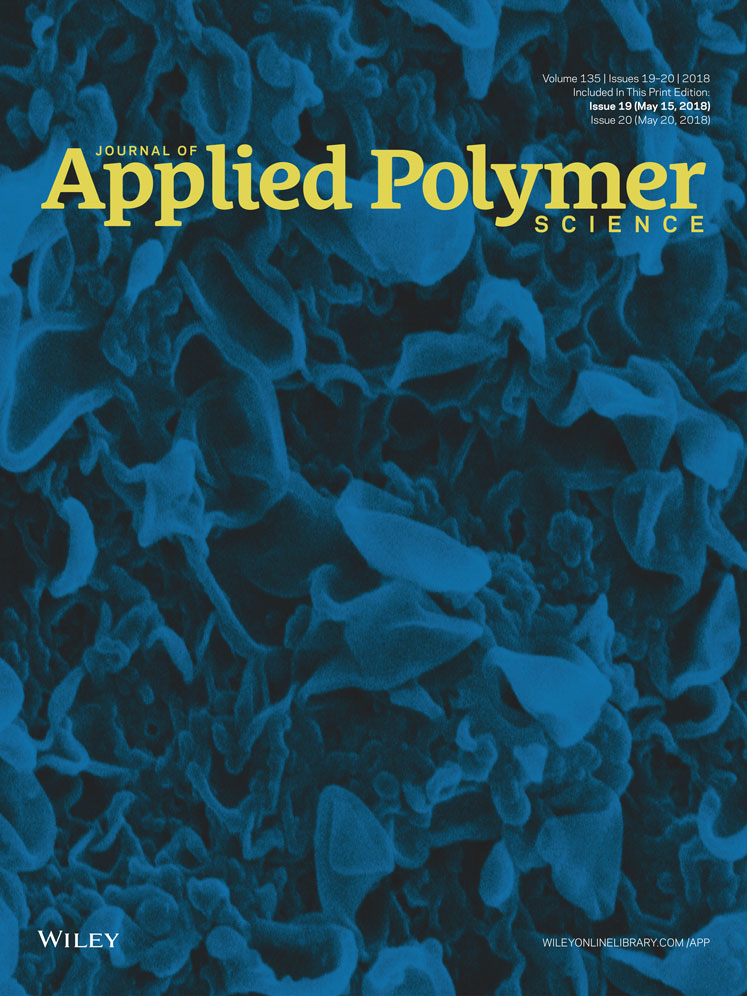Role of caged bicyclic pentaerythritol phosphate alcohol in flame retardancy of PA6 and mechanism study
ABSTRACT
A series of PA6/PEPA composites were prepared by mixing caged bicyclic pentaerythritol phosphate alcohol (PEPA) and polyamide 6 (PA6) at different feed ratios by the melt-blending method in a twin-screw extruder. The influence of PEPA on the flame-retardant properties of PA6 was investigated using the limiting oxygen index (LOI), the Underwriters Laboratories UL-94 test, and the cone calorimeter method. Fourier transform infrared spectroscopy (FTIR), scanning electron microscopy, X-ray photoelectron spectroscopy, thermogravimetry (TG), and TG-FTIR were conducted to study the influence of PEPA on the thermal decomposition and the mechanism of performance of PA6 from products of condensed and gaseous phases. The results show that the LOI value and the content of residual char of PA6/PEPA composites increased with increasing PEPA content, and an LOI value of 38% could be reached when the feed ratio of PEPA was 30 wt %. The average heat release rate and total heat release drastically decreased with increasing content of PEPA, and the amount of carbon residue increased by 52.9% over neat PA6 after TG tests. The inorganic acid produced by PEPA during combustion can be used as an acid source to promote the dehydration of PA6 and the processes of esterification crosslinking, arylation, and carbonization. Moreover, there was less CO2 released than by PA6, and more carbon-containing compound remained in the composites so that a stable carbon layer structure was formed. © 2018 Wiley Periodicals, Inc. J. Appl. Polym. Sci. 2018, 135, 46236.




